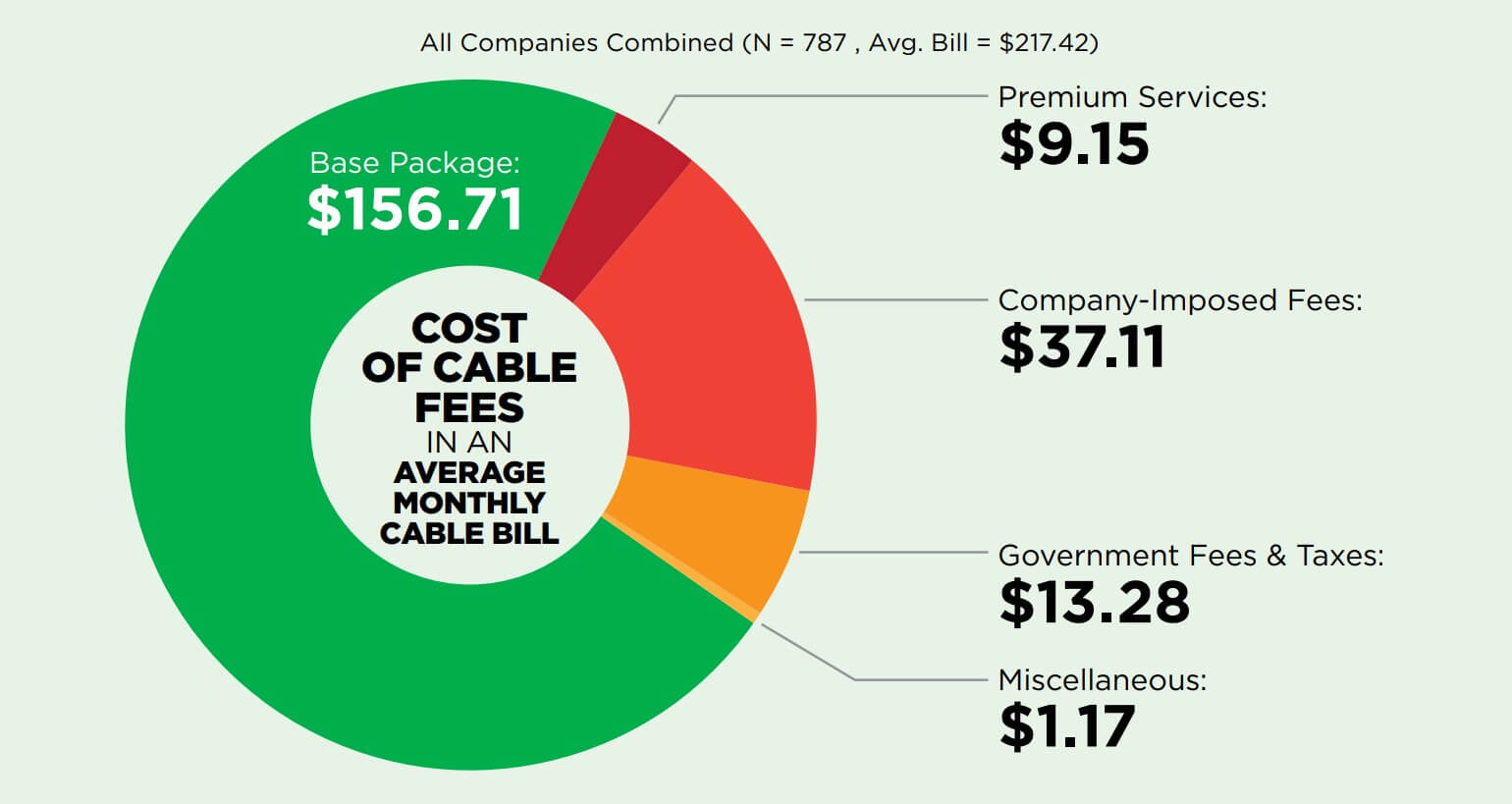Bottom line: Over the last few years, the added convenience and relatively lower cost of streaming services has pushed many consumers to cut the cord. Now, cable companies are practically pushing their customers away by using hidden fees, which means as many as one third of all US households won't be paying for cable or satellite TV by the end of the year.
Cord cutting is accelerating faster than ever, with many rushing to internet streaming services to save money and watch fewer - if any - ads. While 78 percent of all US households were still signed up to a cable or satellite TV service in 2018, that number is projected to go below 65 percent by the end of this year.
A new analysis made by Consumer Reports reveals that companies add an average of $37.11 per month to your cable bill, which is a significant difference when compared to the advertised prices. When you also consider that the average base price sits at $156.71 per month and you add in the company-imposed fees, you get an idea of how they make their money - it's a 24 percent markup on a typical bill.
Examples of company-imposed fees include Regional Sports Fees, which have increased over six times on average in the last four years. And last year we saw that Comcast is making almost $3 billion per year on channels that are essentially free and can be accessed using an antenna. Set-top boxes and other equipment rental fees also add to the price hikes, as do things like the "HD Technology Fee" - something that unlocks the high-definition capabilities of your existing set-top box.

Jonathan Schwantes, senior policy counsel for Consumer Reports, noted that "cable companies are notorious for advertising a low price but charging much more by adding a long list of confusing fees to monthly bills." This all adds up to an estimated $28 billion per year in surcharges for consumers for the 13 companies analyzed in the report.
People who wish to avoid company-imposed fees usually find that they can't avoid them without downgrading their service. When Consumer Reports contacted cable companies to clarify the situation, the general response was that the fees "help them pay for their own increasing costs for providing content." However, that still doesn't explain why they advertise lower costs, and apparently customer service representatives of every major provider are unable to explain the additional fees in detail.
Consumer Reports is advocating for regulatory changes that would require cable companies to include all charges in their advertised prices and let customers opt out of contracts that are subject to price hikes without paying termination fees.
In the meantime, cord-cutters face a different problem - there are now too many services to choose from that stream exclusive content - Netflix, HBO Max, Apple TV, Disney+, Amazon Prime, and others. This could lead to a future where they cut the cord to escape cable TV bundles, only to end up with a different kind of bundle that is just as costly and confusing.
